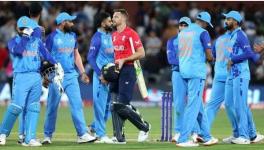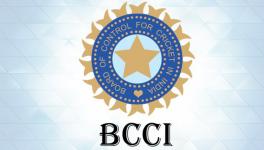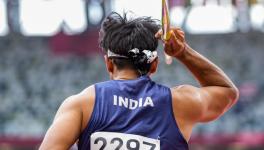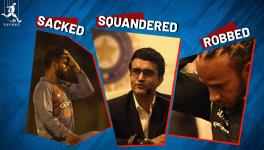On The Ball | Living in the Age of Shahid Afridi
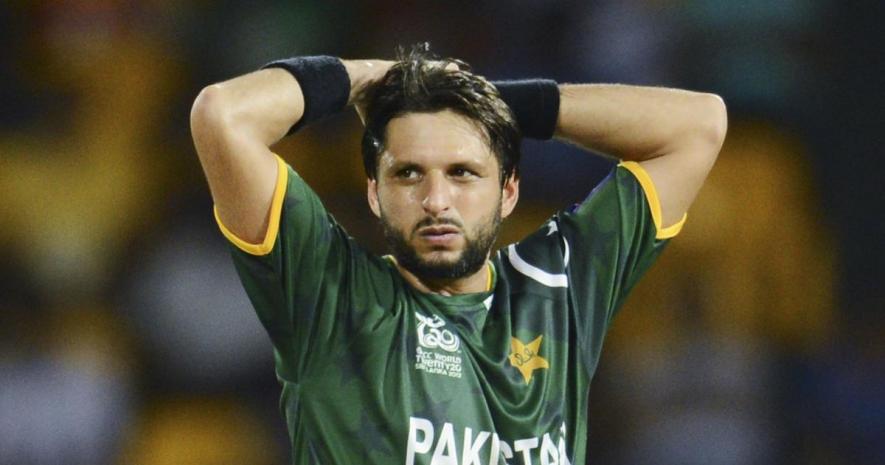
Shahid Afridi settled one of the lingering mysteries of our time by confessing that he wasn’t actually 16 on his debut for Pakistan in 1996. (Pic: Twitter/ICC)
And so finally, more than three years after he played his last match for Pakistan, Shahid Afridi has legitimized the whispers that accompanied his sometimes controversial, oftentimes captivating and always colourful international career. That he wasn’t what he claimed to be, at least when it came to age. Surprise, surprise.
Afridi stormed into the consciousness of the cricketing world in October 1996 when, in his first hit at the global level, he unleashed a 37-ball hundred against Sri Lanka in Nairobi, then the fastest century in 50-over internationals. In itself, it was an extraordinary exhibition of unfettered ball-striking as six fours and a whopping 11 sixes dotted the Nairobi Gymkhana landscape. That the feat emanated from the scything willow of a 16-year-old embellished its lustre further as the lad from Khyber Agency quickly established himself as the darling of the masses.
Read More | Indian Basketball Deserves a Pro League, Built Around a Systematic Grassroots Programme
Afridi had been pulled out of a Pakistan Under-19 team playing in the Caribbean to make his senior debut. Now, of course, we know that he really wasn’t under 19. But even in a senior team that included Saeed Anwar, Salim Malik and Waqar Younis, he held his own in the popularity stakes, his infectious youthful enthusiasm and his exhilarating risk-taking propensity that was attributed to his teenager status catapulting him to cult hero level.
A showman if ever there was one, Afridi lapped up the adulation. He was not the most consistent of batsmen, but every time he walked out, there was electricity in the air. The possibilities that lay tightly coiled inside that lithe frame and that bruising bat didn’t always translate into gainful runs, but therein lay the charm of Afridi – he was explosive but unpredictable, gifted but unreliable, magical yet mysterious.
Now, Afridi himself has shattered some of the mystery by admitting in his autobiography that he was most certainly not 16 when he smashed the Sri Lankan bowling to smithereens, nearly two and a half decades ago. Game Changer would seem an appropriate title for a book that is certain to entertain if not educate or enlighten; one is not sure, however, if his dramatic age-related revelation will be a game-changer at all, except to reiterate that more often than not, seeing is believing.
Read More | Caster Semenya vs IAAF: CAS Ruling a Case of Protecting Majority By Targeting the Minority
Those who saw Afridi in 1996 as he set about dismantling Sajeewa de Silva, Chaminda Vaas, Muttiah Muralitharan, Kumar Dharmasena, Aravinda de Silva and Sanath Jayasuriya could scarcely believe their eyes. A majority of this glittering array had driven Sri Lanka to the World Cup title less than seven months previously, and yet they were being sent on a hiding to nothing by this brazen lad who came out of nowhere and flexed his not inconsiderable muscles. Jayasuriya’s 10 overs yielded 94 runs as Afridi added insult to injury; the Sri Lankan’s 48-ball record for the quickest ODI ton was felled in a mere six months.
Initial awe and disbelief soon gave way to sniggers and cynicism. I remember one of the active Indian players at the time guffawing during a telephonic chat, “Sixteen? This guy is 16, seriously? Then I was born yesterday, man.”
As is our wont, I dismissed it as professional jealousy, though I knew that this particular individual wasn’t prone to such negative emotions. Gradually, as the legend of Afridi grew and as he became one in a long list of bearded Pakistani teenagers to have graced the game, my mind kept going back to what my friend had said. Now, Afridi himself tells us that he was anything but sweet sixteen when he was tearing the Sri Lankan bowling apart.
Read More | Santosh Trophy: Where Indian Football’s History and Its Future Reside
Afridi has revealed in the recently released autobiography that he wasn’t born in 1980, as the record books have held for so long, but five years prior to that, in 1975. By that yardstick, he would have been either an old or a young 21 by the time of his Pakistan debut. However, Afridi won’t be Afridi if even here, he didn’t muddy the waters. “I was just nineteen, and not sixteen like they claim. I was born in 1975. So, yes, the authorities stated my age incorrectly," he has written. Something doesn’t add up. But then again, why should it? Why should it indeed, after all these years when a 16-year-old who wasn’t 16 was turning the world order upside down, and when the same protagonist, now a young 44 by his own estimation, was hurtling around the outfield in the Pakistan Super League as recently as eight weeks back?
Age, several of our celebrated sportspersons have told us at various stages, is nothing more than a state of mind. That it’s just a number, and you are only as old as you feel. These clichés come in the knowledge that while one can stretch the age barrier, in the end time will win. That it stops for no one, that it will not be conquered even through bloody-mindedness and undiluted commitment.
Read More | BCCI Cricket Advisory Committee: To Be or Not to Be, That’s the Conflict | On the Ball
Age is a touchy subject, even in sport. There was a time when those in tinsel town actually grew younger with each passing birth anniversary. Slowly, the benefits of age-reduction started to appeal to the sports firmament as well. In an era gone by, it wasn’t uncommon for even so-called Under-16 players to arrive for camps and matches armed with shaving kits. One coach was so intimidated that some of his wards shaved more times in a day to keep up their age-related pretense than he did in a week that he dumped the camp, traumatized, and needed several hours of counselling before resuming duty.
‘Fudging’ of age in sport is a trait unique but not exclusive to the sub-continent. Allegations of overaged athletes participating in even Under-13 tournaments, with the tacit collusion of their schools, is hardly a rarity in India, though today, with more advanced scientific procedures such as the bone density test, it is increasingly difficult to slip through the cracks. The desire to stay young, if not necessarily fresh, is universal and points to the vanity of the human heart. So why should sport be any different? Oh, and never mind if the rules are tweaked/broken? After all, win at any and all cost, right?
Intriguingly coincidentally, I ran into an old friend recently after several years, and we reminisced our college days like you invariably do when the miles in the legs keep adding up exponentially. He is the only person I know who had two years added to his age by his parents so that he didn’t dip under the minimum age requirement for admission to the next educational grade. Over time, some of us had started to call him Reverse Afridi. I suspect we will have to start scratching our heads now for a more appropriate moniker for him.
(Kaushik is a veteran cricket writer who has reported on over 100 Tests. He co-authored VVS Laxman's autobiography '281 and Beyond'.)
Get the latest reports & analysis with people's perspective on Protests, movements & deep analytical videos, discussions of the current affairs in your Telegram app. Subscribe to NewsClick's Telegram channel & get Real-Time updates on stories, as they get published on our website.









